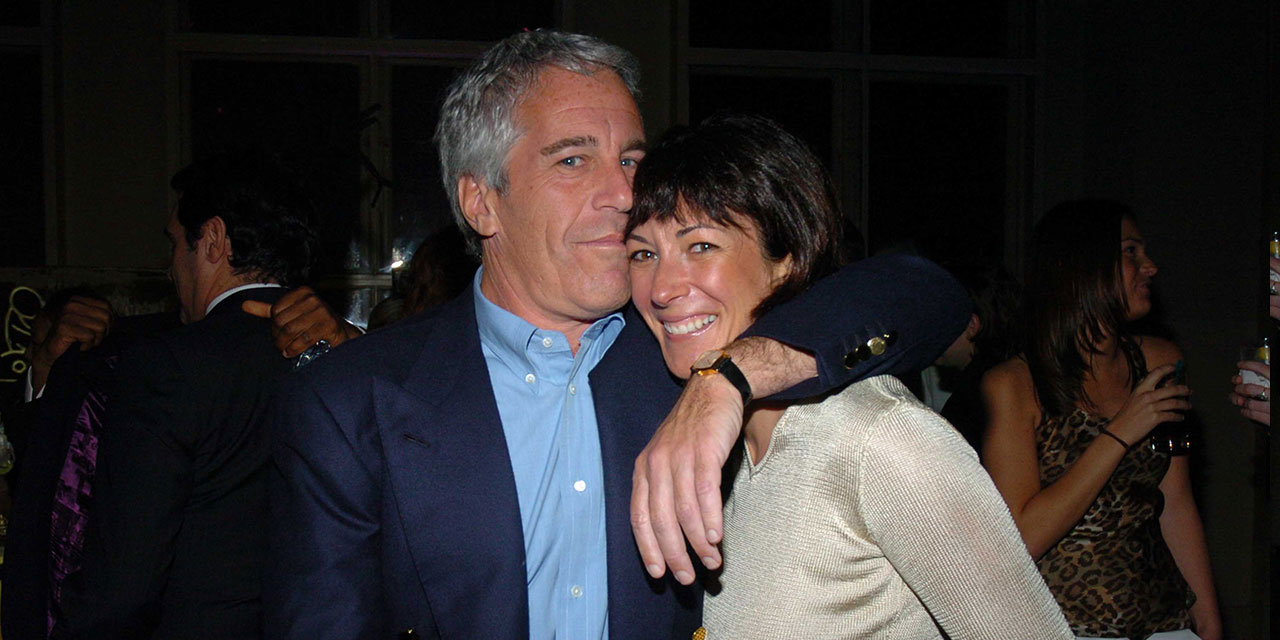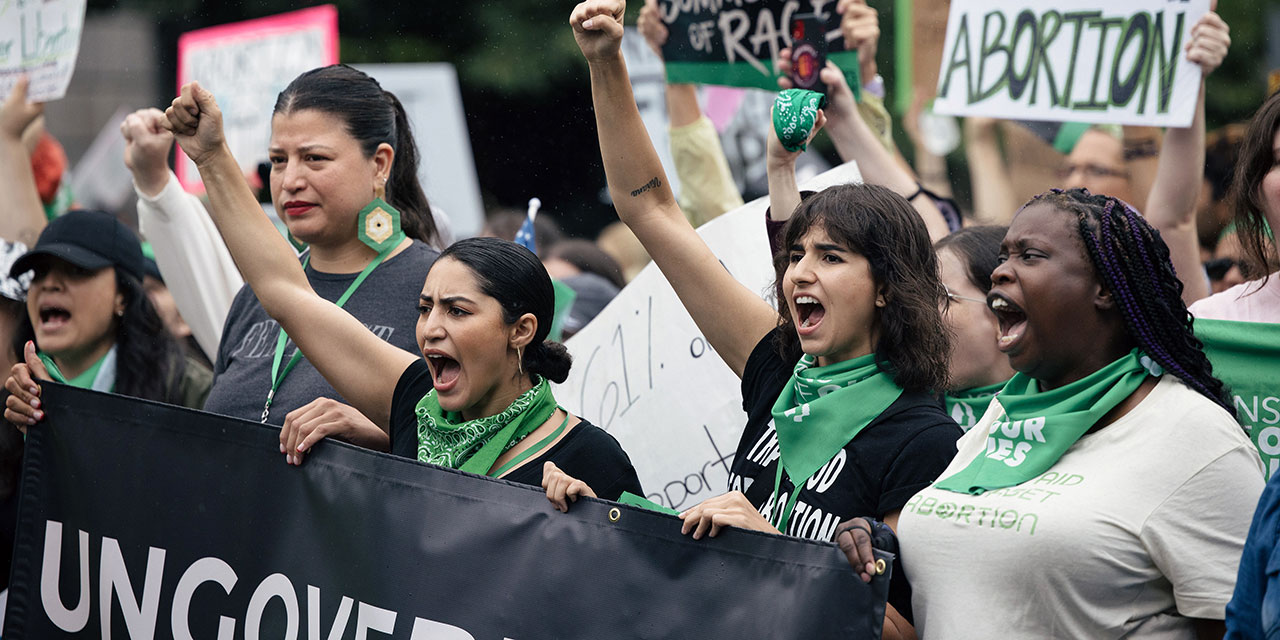Linking to a Sesame Street celebration of “Latinx culture,” Antonio García Martínez, sharpest wit on Twitter, wrote last fall: “One of the great mysteries is how every elite institution, from universities to corporations to media to even Sesame Street, all spontaneously coalesced on the same narrow set of values all of a sudden.”
The set of values in question belongs to the cult of identity—a ramshackle creed that maintains, for example, that the term “Latinx” signifies an actual human group. Once the province of pretentious professors and their captive students, the cult has leaked out of the cannabis-scented halls of academia to infect an astonishing number of people in power. García Martínez is right. In the scope and rapidity of institutional embrace, nothing like it has transpired since the conversion of Constantine.
Finally, a reason to check your email.
Sign up for our free newsletter today.
The National Archives in Washington, D.C., today places warning labels on the Constitution, because reading it may induce unpleasant sensations in some identity groups. Universities like Princeton now publish “antiracist toolkits” to instruct the faithful on how to “move beyond diversity” and into identity heaven. Nike, which makes sneakers, demands of its customers: “Don’t pretend there’s not a problem with America. Don’t turn your back on racism.” The Cleveland Indians and Washington Redskins, two time-honored sports franchises, for their identity sins have had their names stripped away. I could extend the list unto boredom—it would range from prestigious media institutions like the New York Times to local bodies like the San Francisco school board.
Tyler Cowen, nobody’s idea of an identity enthusiast, has declared that “wokeism”—a popular tag for the cult—“will rule the world.” “Winners win! And woke is right now one of America’s global winners,” he writes.
What, specifically, are the values that the identity creed promotes? The terms that the critics use, such as “woke” and “cancel culture,” don’t impart much information. I tend to avoid them. The words used by true believers, like all attempts to describe the ineffable, are shifting, ambivalent, and opaque. One must be initiated to grasp how many letters should go into LGBTQIA and why the damned thing keeps growing.
Wesley Yang, a critic, sees the cult as the “successor ideology” to liberalism and, more recently, has referred to it as a “successor regime” whose “year zero” began in 2021, after the electoral triumph of progressive-minded Democrats. The objective of the successor ideology is to dismantle the citizen-based ideal of equality and replace it with an identity-based system of justice and government. Here are some of Yang’s examples of how it has worked in practice:
The Small Business Administration prioritized emergency Covid grants to restaurants by race. The Department of Agriculture prioritized funding to black farmers. The state of Vermont allowed BIPOC [“Black, Indigenous, People of Color”] residents early access to the vaccine. The state of California mandates diverse representation on corporate boards. San Francisco introduced a pilot public/private partnership program offering monthly cash payments reserved exclusively for black and Pacific Islander women.
The revaluation of liberal values, Yang holds, is already upon us.
If the cult of identity rested on a coherent ideology, Yang would be its most perceptive interpreter. But no such ideology exists. Fashionable French philosophers hover in the background, yes, and there’s a dash of vulgar Marxism for seasoning, but the curious inquirer will encounter far more mystery than logic and far more zeal than programmatic thinking. Once removed from the realm of mysticism, the whole identity edifice collapses like that condo in Surfside, Florida, from its own structural inadequacies.
Let me cite just two internal contradictions, both seemingly fatal. The first concerns the numerology of identity. It is a dogmatic assertion of the cult that outcomes must be at least proportionate to population. If blacks represent 13 percent of the country’s population, there must be at least 13 percent black CEOs, black Ivy League professors, black New York Times columnists, black Google employees, and so on.

But given that victim groups are both unstable and overlapping, this mathematical quest breaks down almost immediately. Every person who is black and “cisgender” (that is, they identify with the sex that biology makes them) and male presents an insoluble dilemma, unless we opt for dismemberment. Yang’s successor ideology has no way to reconcile conflicting identity claims; they can be adjudicated only by a power that stands outside the system.
The second contradiction is even more decisive. Identity as a sectarian faith genuflects before conflicting human ideals. It affirms that anyone can become anything—even, at its most exuberant, that everyone can become everything. This tendency proliferates pronouns and aims to obliterate standards and differences: between citizen and alien, for example, or between being a man and being a woman. It’s all personal choice, with life pared down to an extreme utopian individualism.
At the same time, we are told that the only meaningful human unit is the identity group, whose borders are fortified and must be defended at all costs. This tendency magnifies and sanctifies difference, until identity becomes destiny. Every conversation begins with the words “As a gay person” or “As a Latinx” because group experiences are taken to be incommensurable. All products and tokens of the group are to be shielded from profanation. White boys must never grow dreads or sing the blues: that’s “appropriation,” not admiration, and the minimum penalty is a virtual lashing on the web.
No doctrine in the world can reconcile a radical individualism with such an uncompromisingly tribal perspective. The cult of identity, taken neat, appears as a gigantic conflict-generation machine, demanding constant outside intervention and tinkering just to keep the parts from blowing off into the ether.
Given the ideological poverty of the cult’s “set of values,” how do we explain the mass conversion of elites? Evidently, Donald Trump deserves some credit. His election radicalized the two groups that today wage holy war on behalf of those values: the young, who provide the bulk of the activists; and the elites themselves, who, after the shock of rejection by the voters, were ready to think the worst of American society.
However, there were many possible responses to Trump. If, as Cowen states, woke became the winner, it was because it met an existential need in these two groups.
The cult of identity, properly understood, consists of a series of platitudes and stereotypes invariably leading to gestures of repudiation and calls for the ritual purification of society. By definition, there can be no missionaries of identity. True believers have shown little interest in persuasion: their faith has spread not because of clever arguments but by relegating rival creeds beyond the pale of moral consideration. Hence the obsession with nomenclature—with the magical force of words.
Conversion has entailed drastically different experiences, depending on where you stand in the social pyramid. From below, at the level of the young professional and the college student, the cult provides a vision of truth and a source of meaning in a romantic struggle against the systemic evil represented by the rest of us. From above, at the level of high government and corporate officials, ostentatious adherence to the cult is a tool of control.
The dance between the generations has been awkward. Young activists are eternally on the hunt to identify and attack injustice, typically revealed by the utterance of certain taboo words. They dwell in a world of weakened religious and family ties, and their idea of community is a website. The cult of identity fills an existential void and raises up the young to be the vanguard of avenging virtue in a sinful world. This cohort is driven by the urge to purify—that is, by negation to the edge of nihilism.
Older institutional types, on the other hand, have seen their influence and authority plummet over the past decade. Of this vertiginous fall from grace, Trump was merely a symptom, not the cause. The digital age will not tolerate the steep hierarchies of the twentieth century: these will either be reconfigured or smashed. Stripped of the splendor of their titles, panicky elites have cast about for some principle that will allow them to maintain their distance from the public.
The puritanical slogans pouring out of anti-Trump protesters must have sounded, to this group, like an opportunity. They could reorganize society on woke values, with themselves in charge as high commissioners of purity. They could trade institutional authority for social control. With uneven measures of sincerity and cynicism, the cult of identity could be appropriated by power.
The young, as might be expected, despise these graying warriors, whom they consider hypocrites tainted by the very sins of racism and privilege they pretend to oppose. Periodically, woke institutions like Google and the New York Times are shaken by revolts from below, and liberal governors and CEOs get consumed in inquisitional fires. As a matter of unromantic reality, however, protesters need elite politicians and executives to be the applauding audience in the theater of grievance: they have no choice but to rely on the institutions to expand their reach and adjudicate the cult’s contradictions into some sort of bureaucratic order.
The elites, just as naturally, fear and detest the youthful zealots, whose proximity has an effect similar to that of a ticking bomb. Yet every political system needs fear-inducing enforcers. The elite class learned long ago that it inspires mostly scorn, so it has conscripted true believers to be the attack dogs of virtue and the digital SWAT teams that will keep the rabble quiet on behalf of a purified establishment.
This is the uneasy bargain that, in García Martínez’s phrase, “spontaneously coalesced” during the Trump years and today rules over every prestigious corner of America. For all the differences in age and status, the two groups come from the same stock: upwardly mobile, hyper-educated, and largely white. It’s really a family arrangement among parents and children in the upper echelons of the great American middle class.
Together, they constitute a small minority of the electorate. Between them, they control the commanding heights of politics and culture, and they may possess the means to intimidate a surly public into silence.
Now that all the famous names, from President Biden to Kermit the Frog, have accepted identity as the established church of the United States, what are they going to do about it? History suggests that nothing will change quickly. Even Constantine left the Temple of Jupiter alone.

Christianity advanced on the strength of a double-edged strategy. From above, the government redirected its subsidies from pagan to Christian institutions, creating a potent incentive for the upper classes to see the light. From below, mobs of exalted souls ransacked pagan temples while the police stood by, intimidating ordinary people into abandoning the old gods.
But the process took generations. We unrepentant sinners will probably not end our days chained to the gloomy dungeons of the Identity Inquisition. In a more practical vein, we can expect the Biden administration to push its identity agenda to the bleeding edges of our constitutional framework—and beyond. Republicans and other unbelievers will push back, taking every available legal avenue. A conservative Supreme Court will be inclined to side with them. From the perspective of American politics, too, nothing is likely to change soon.
A more interesting question concerns the effects of the cult of identity—on the true believers, on the country, and on the world. Cowen’s generally benign take on wokeism includes speculation that its spread could improve the lot of oppressed groups in authoritarian countries. “It doesn’t much matter who controls the English Department at Oberlin,” he writes. “But it would be nice if the Saudis allowed more rights for women.”
This fails to account for the internal contradictions of the cult, though. Isn’t it Islamophobic to foist feminism on a Muslim society? There’s no answer to that. The rival claims, again, can be adjudicated only by an outside power. In Saudi Arabia, that power is Prince Mohammed bin Salman. Now, the prince could well put Saudi women in charge and order Saudi men to wear the veil, much like Peter the Great forced the boyars to shave their beards. But the civil and political rights of no one would be improved by this move.
Cowen observes that wokeism is yet another carrier of “American cultural influence.” It will be resisted as such. Outside the Anglosphere, the cult is unlikely to reach much further than the smoky catacombs of the intellectuals.
If identity offered adherents a soaring new vision of human relations, as did Marxism and Christianity, it might overcome its contradictions. But I described the cult in terms of platitudes and stereotypes for a reason: it has all the outward trappings but none of the spiritual content of a true religious faith. Nothing about it transcends or soars. Even the social aspect is mediated by the shallow narcissism of the digital universe—you get more of a buzz at the sports arena, where fanatics at least come together face-to-face.
From the outside, identity feels like thin gruel. Very little is demanded of true believers. They arrive already in a state of grace. Total obedience is demanded of everyone else. We are corrupt beyond redemption and can be detoxified only by our submission.
The platitudes about justice, once questioned, disintegrate into mere slogans. The groups that supposedly define our identity are crude stereotypes. Nobody has ever cried, “Latinx or death!” or “Power to the LGBTQIA!” from atop a barricade. Nobody ever will.
In its effects, identity fixation appears less like a cult and more like the sociopolitical equivalent of a personality disorder. If evil forces inexorably control society, the only possible responses are paranoia or rage. If the world is about to end in a climate conflagration, depression seems like a perfectly rational attitude. The youngest generation, which has most deeply imbibed these notions, suffers from unprecedented levels of anxiety, depression, and suicide. On top of that, the birthrate is plummeting. Correlation isn’t causation—but let the buyer beware.
Is the cult of identity here to stay? I’m not sure whether a few years’ run makes for a win or a fad. If Donald Trump declines to run again for office and the Democrats lose the White House and Congress, the elite wing of the cult could find itself back where it was before 2016—a loud but disconnected and mostly regional presence. The young activists would still be with us, implacable as ever—and, in that sense, the cult would seem to own the future. But the future is equivocal. On this question, I stand with President John F. Kennedy, who was once asked about the extravagant positions staked out by the Young Democrats. “Time,” Kennedy responded with a sigh, “is on our side.”





